FOLLOW THE MOON
Our Moon often dominates the night sky because it is so close to us. On average, it is about 239,000 miles away, so most people will drive roughly the equivalent of a lunar round trip in their lifetimes. The other planets and the Sun are millions to billions of miles away, while the stars are so far that the term light-year is used to describe their distance from us. The Moon itself appears to take a trip around the night sky each month, as it revolves around the Earth. If you see the moon tonight, hold your fist at arm’s length. The moon will move just a bit more than that in one night, west to east, relative to the background stars and planets. This creates some great opportunities to locate objects in the sky, as long as the Moon’s glare doesn’t drown them out.As the picture below shows, the planets Jupiter and Saturn shine in the southern sky in the early evening during November. Between the 1st and 5th, the moon makes its way past first Saturn and then brilliant Jupiter, all the while waxing from First Quarter (half-lit) through gibbous (hum-shape) phase. The star Fomalhaut forms a triangle with Jupiter and Saturn this year.
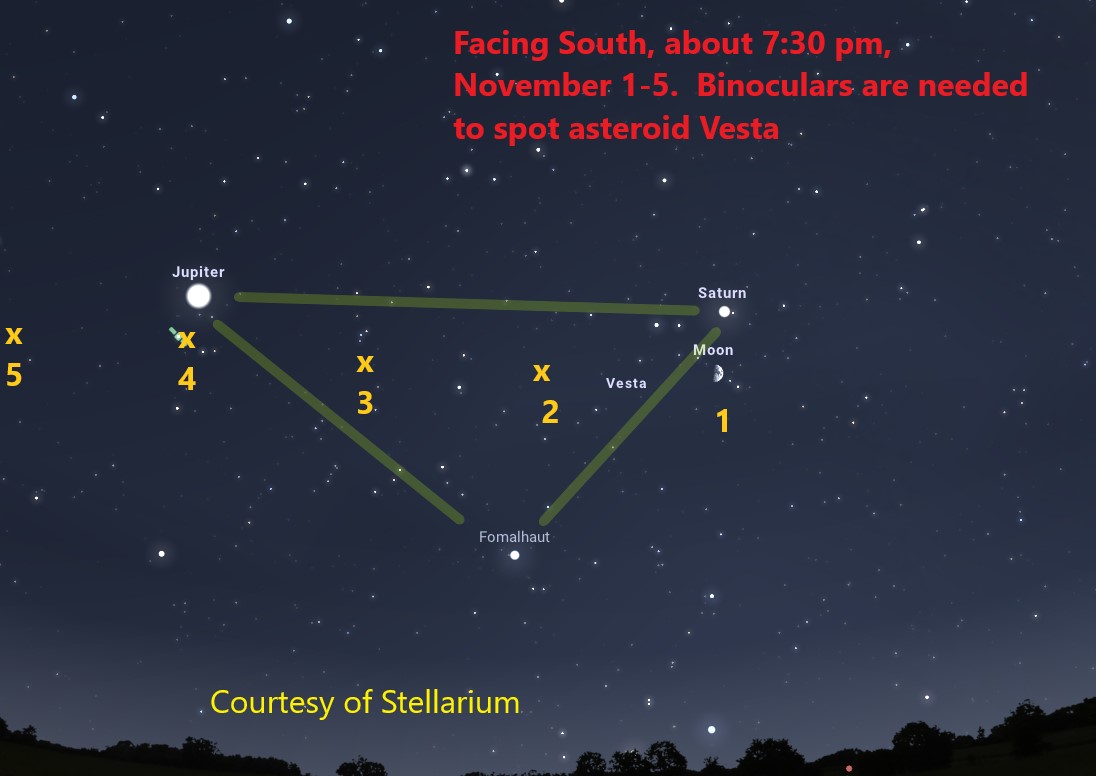
The moon will continue on its merry way, going through its Full phase, officially at 5:03 am on the morning of the 8th. The traditional name for November is the Beaver Moon. The full moon appears opposite the Sun, rising in the east near sunset and setting in the west near sunrise. The moon and outer planets appear brightest near this opposition position. Notice how Mars, readily identifiable due to its reddish-orange tint, is becoming increasingly prominent as the fall goes on. By the end of November, it will shine nearly as brightly as Jupiter, brighter than any nighttime star in the sky.
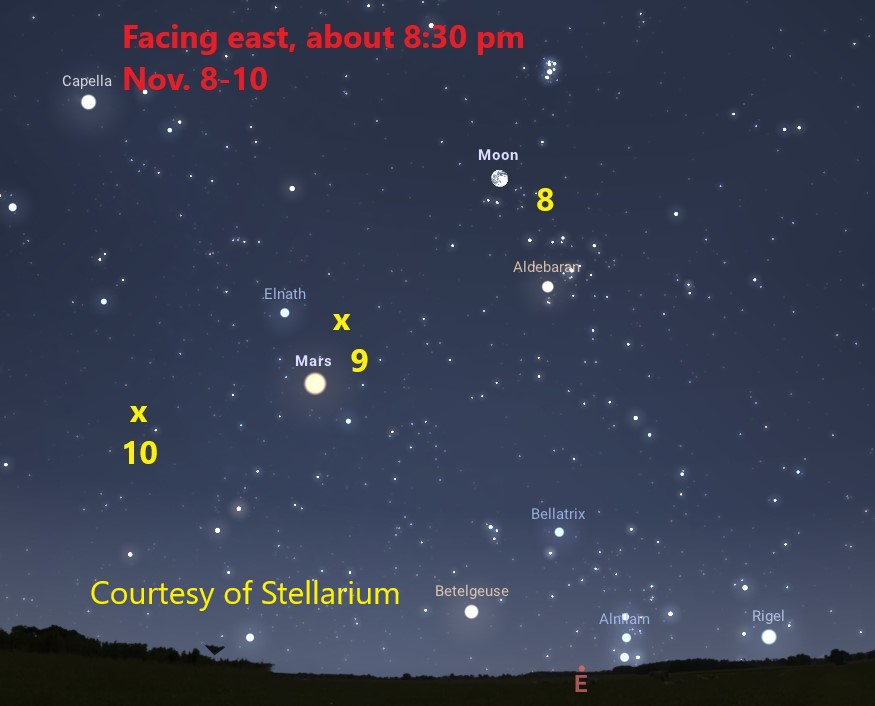
Although the Earth is between the Moon and Sun every month at full moon phase, there usually is not an eclipse, as the Moon’s orbit is tipped slightly. Twice a month, the Moon passes through the node, the plane of the Earth-Sun line. When Earth, Moon, and Sun are all in line at the same time that the Moon is also at the node, there can be an eclipse, and such is the case early on the morning of November 8th. A Total Eclipse of the Moon is perfectly safe to look at, as the Moon is dimmed by the shadow of the Earth. In St. Louis, the Moon will begin to enter Earth’s darker umbral shadow at 3:09 am, and will be completely shadowed between 4:17 and 5:42 am. I know that this is not a good time for most people, but it will be worth setting your alarm and waking up early for at least a quick look. Usually the eclipsed moon does not vanish but shines a dull reddish orange, as some sunlight filters around Earth’s atmosphere, faintly lighting up the shadowed Moon. Using binoculars or a smal telescope definitely enhances the view of the umbral shadow. Depending upon the clarity of Earth’s atmosphere as a whole at the time, the totally eclipsed moon can look like anything between a new penny or quite dull, as depicted in the picture I took of the May 15, 2022 eclipse.
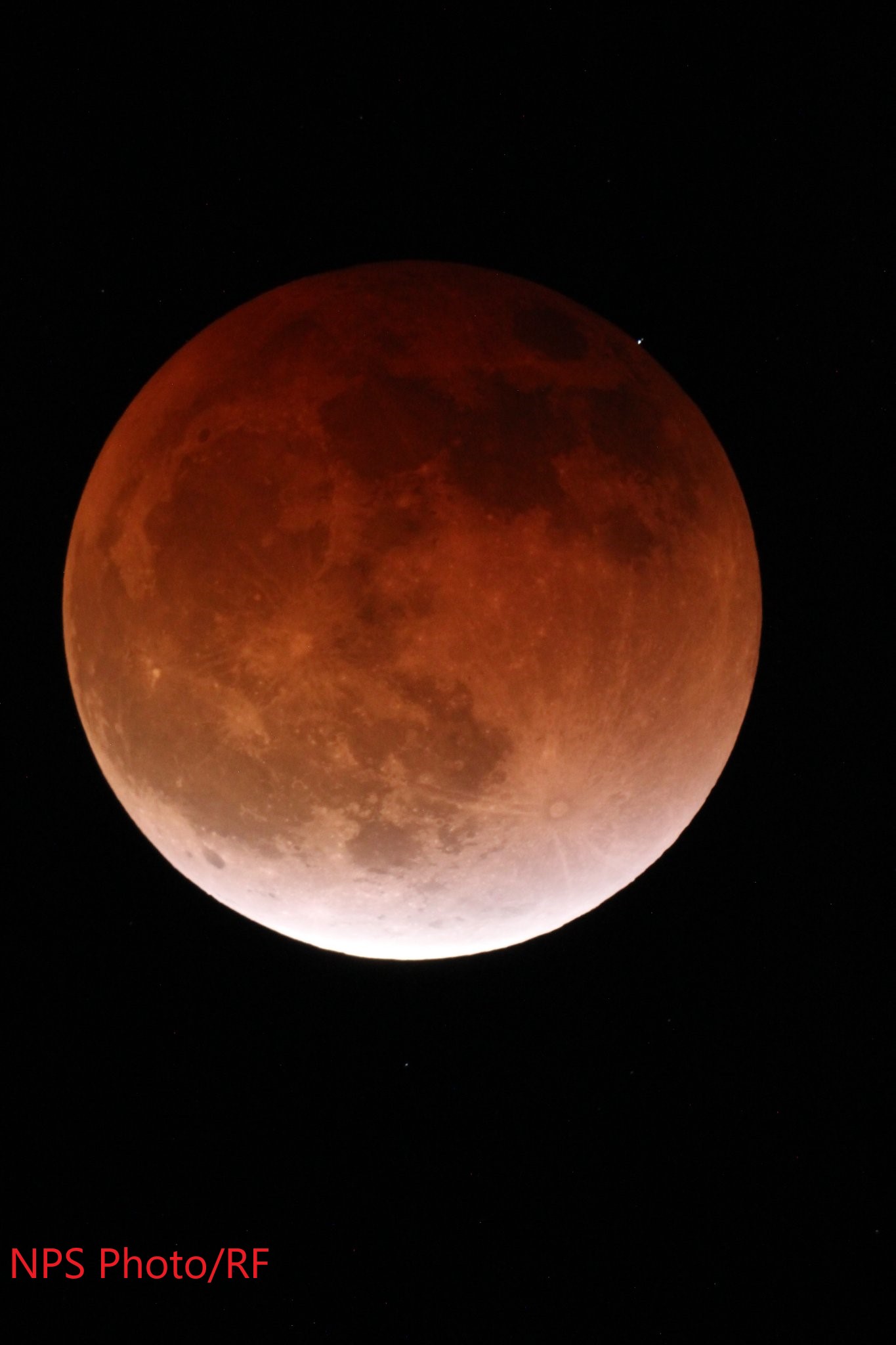
The Moon is not the only object experiencing opposition around this time- distant Uranus happens to be as well. I amost never have mentioned Uranus in this blog, because it is vastly dimmer than the five brighter planets. Normally, a full moon nearby would make Uranus difficult or impossible to find, but the happy accident of the total eclipse nearby makes this a great chance to locate it. With binoculars or a small telescope, during totality, look about three or four moon widths in about the ten o’clock position, and you might spot a dim “star.” If you are favored with good vision, very clear skies and a dark sky site, see if you can actually glimpse Uranus with your unaided eyes. It is near the limit of visibility- in fact I have never done it myself! Uranus was actually recorded on some ancient star charts, but due to its faintness and very slow 84 year orbit around the Sun, nobody realized that it was actually a planet until 1781.
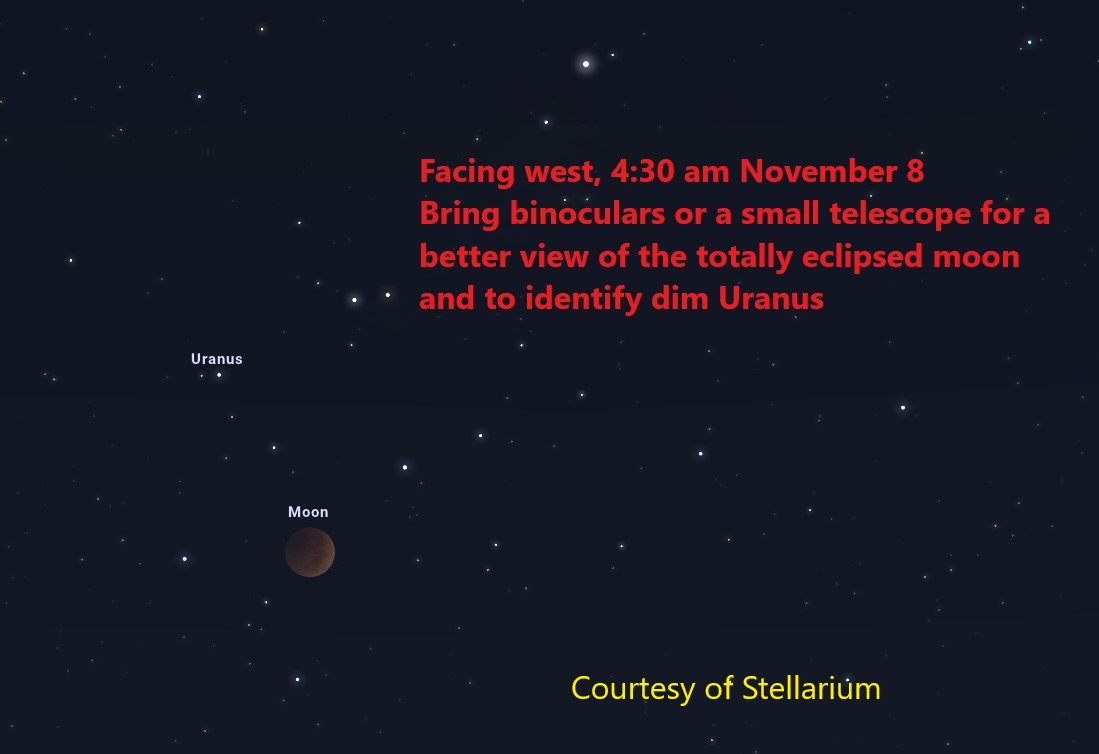
After Full moon, the moon’s phase will gradually diminish through its waning gibbous and waning crescent phases, rising 40-50 minutes later each night, and remaining visible after sunrise in the morning daylight sky. Since the Moon passed Saturn and Jupiter in the sky at the beginning of the month, it actually makes a whole trip around by the end of November and the beginning of December, as shown below. On the night of December 7, the Moon wil have made it all the way around to Mars, and something very special will happen then- our subject for next month’s edition!
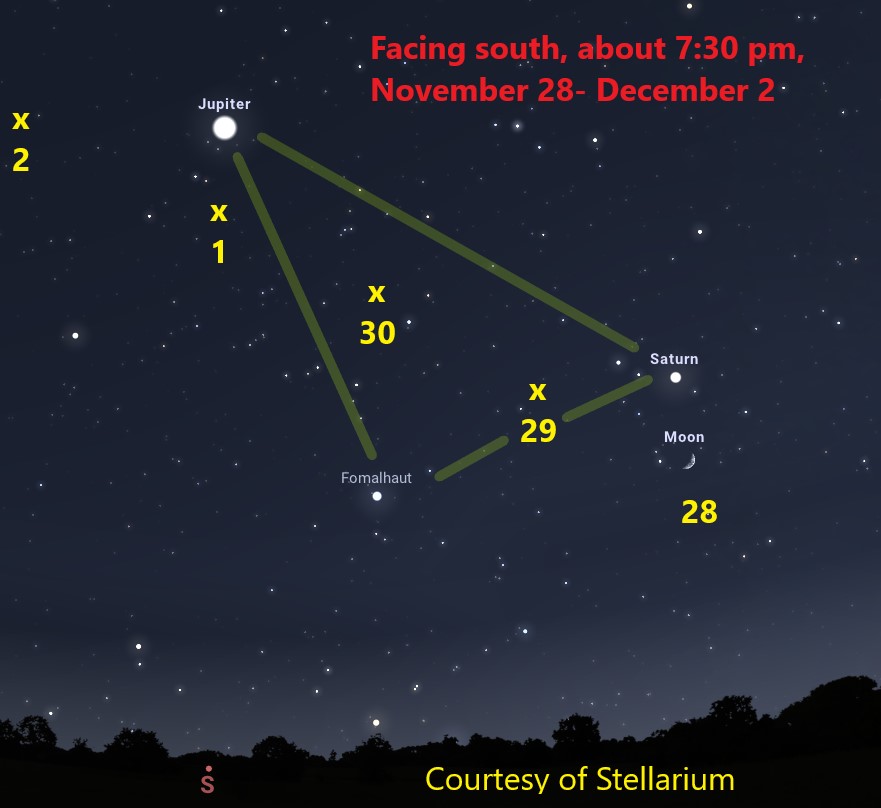
Our Gateway to the Stars program is complete for 2022. We expect to resume next May with a schedule of stargazing related educationl programs and free telescope viewing.
